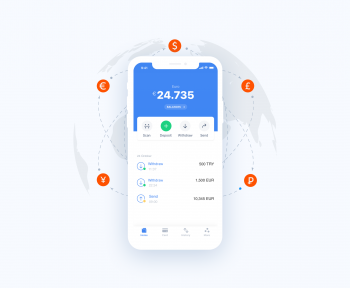As scary as it may sometimes sound, Inflation is a term that often conjures images of rising prices and reduced purchasing power. It’s a phenomenon that affects everyone, from individual consumers at the grocery store to policymakers in government. Going to a grocery store and checking the prices does not provide us enough data to indicate the rate of inflation or the rise of prices. In order to track that regularly CPI (Consumer Price Index) is published. With CPI it is possible to see and understand where inflation currently stands.
However, not all inflation is the same, and understanding the distinctions between different types of inflation can provide valuable insights into the health of an economy. One such distinction is core inflation, a concept used extensively by economists and policymakers to gauge underlying inflation trends. The CPI measures inflation by two main categories: total (or headline) inflation and core inflation. Today we will talk about core inflation to give you an insight. Let’s explore.
What is Core Inflation?
If you are reading about inflation then definitely you have heard about this term before. Like we have explained, it is one of the two main categories of inflation. Core inflation is a measure of inflation that strips out certain volatile categories from the general price index, specifically food and energy prices. This is calculated in this way because prices in these categories can be highly susceptible to external shocks, such as weather events or geopolitical tensions, which may not reflect the broader economic conditions. By excluding these elements, core inflation offers a more stable view of inflationary trends over time.
Importance of Core Inflation
There are several reasons that make Core inflation an important component. Primarily, we can have a better picture of the underlying inflation trends, free from the details of short-term price fluctuations in food and energy. In order to foster economic stability, adjusting interest rates are one of the important measures taken by central banks like the U.S. The Federal Reserve and this clarity is invaluable to take more informed monetary decisions.
For businesses, understanding core inflation helps in planning and adjusting wage levels, prices, and investment strategies. Investors and consumers also benefit from understanding core inflation as it affects economic forecasts and purchasing power over the long term.
Measuring Core Inflation
When we look at the United States, they use two main indices to measure core inflation: the Consumer Price Index (CPI) and the Personal Consumption Expenditures Price Index (PCE). Both indices calculate inflation by tracking changes in the prices of a basket of goods and services over time, but they differ in scope and methodology.
The CPI, managed by the Bureau of Labor Statistics (BLS), focuses on out-of-pocket spending by urban consumers. It excludes food and energy prices to provide the core CPI figure, reflecting the spending patterns of nearly 93% of the U.S. population.
On the other hand, the PCE, compiled by the Bureau of Economic Analysis, includes a broader range of expenditures (including those by businesses and on behalf of individuals) and uses a formula that allows for changes in consumer behavior. This flexibility can sometimes make the PCE a preferred measure of inflation for the Federal Reserve.
Inflation data is being observed closely by policymakers and central bankers but specifically core inflation data because it is intended to show broad-based, economy-wide trends.
Main Drivers of Core Inflation
Several factors influence core inflation, including:
– Economic Growth: When economic activity increases, it typically boosts demand for goods and services, putting upward pressure on prices.
– Labor Market Conditions: Low unemployment rate and higher wages can lead to increased spending and higher prices as businesses pass on the cost of labor to consumers.
– Monetary Policy: Central bank policies are other important factors that can influence inflation directly through interest rate adjustments and indirectly through measures that affect the money supply.
– Global Factors: Exchange rates and international commodity prices are volatile and this situation also has an impact on inflation, reflecting the interconnected nature of modern economies.
– Production Costs: Increases in the costs of raw materials, labor, or overhead can lead firms to raise prices to maintain profit margins.
Challenges in Measuring Core Inflation
There are challenges when it comes to measuring inflation. The exclusion of food and energy prices can sometimes obscure the impact of significant economic events. For instance, an unexpected increase in oil prices can have widespread effects on various sectors of the economy, influencing core inflation indirectly.
Moreover, the global nature of supply chains means that inflationary pressures can be imported from abroad, complicating the measurement of domestic inflation. We have seen these challenges in the COVID-19 pandemic as disruptions in supply chains led to price spikes in various goods, affecting the measures of core inflation.
Investment Implications
If you are into investing, understanding core inflation is vital. The core inflation affects various asset classes differently. Bonds, for example, tend to underperform during high inflation periods as the real return after accounting for inflation diminishes. Conversely, real assets like real estate and commodities may see increased values as they often act as a hedge against inflation.
Stocks are not direct factors, they can have a mixed response depending on the sector. Companies in sectors like technology and healthcare may be less affected by inflation than those in consumer goods or utilities, which face direct cost pressures from rising prices.
Knowing Your Inflation is Important!
When we understand core inflation deeply we can have better future planning for our business. Core inflation is a key economic indicator that helps shed light on the underlying inflationary pressures within an economy. It plays a critical role in policy formulation, business planning, and investment strategies. By understanding core inflation, stakeholders can make more informed decisions that account for economic realities beyond the immediate fluctuations in food and energy prices. As economies continue to evolve and face new challenges, the measurement and interpretation methods of core inflation might change in the future due to new factors in the game. However it will remain as a crucial tool in economic analysis and decision-making.



